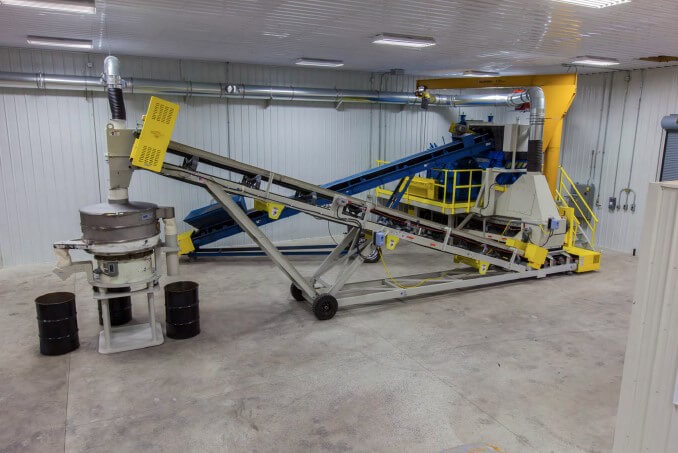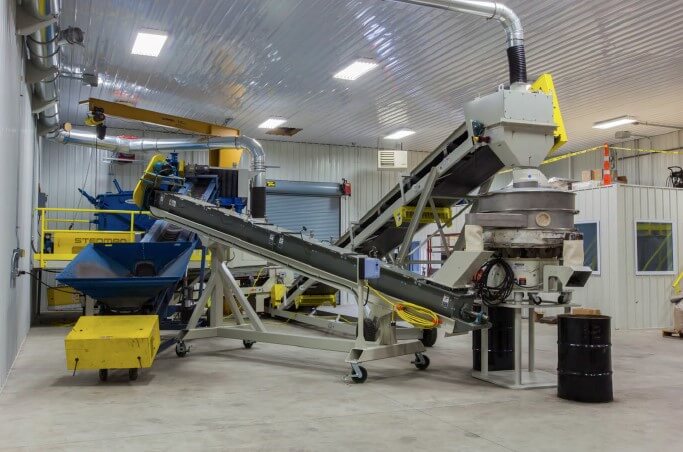Learn Why It’s Smart To Try Before You Buy Size Reduction Equipment
By Chris Nawalaniec, Vice President of Sales & Marketing, Stedman Machine Company
Why Test?
Size-reduction equipment is typically integrated into a large system, so choosing the wrong equipment can inadvertently create a bottleneck that affects the productivity of your overall system, meaning long-term consequences in the cost of consumables, lack of production and downtime.
Testing before you buy helps avoid these operational pitfalls by allowing you to determine the most efficient processing technology to meet your production needs. Our full-scale testing facility allows you to test a range of machines for your exact material and provides a demonstration of a specific model before purchase.
While lab machine tests are possible, they may not be able to determine the actual horsepower and machine size that your project requires. Testing with full-size crushing equipment is best for dependable results since it is difficult to scale up crushing results from a lab-size crusher.
Benefits Of Our Testing Facility
✓ Access to hundreds of reports on file that provide valuable insight on how to configure equipment for a variety of applications
✓ Saves you the expenses of preliminary testing when selecting of the proper size reduction method
✓ Experienced staff can recommend machines based on existing reference data for similar applications
✓ Ability to test a range of different size reduction methods
✓ Demonstrates results in real-world conditions
✓ Can be operated in either open or closed circuit

(Stedman Machine Company photo of open size reduction circuit system with a Stedman Grand Slam™ Horizontal Shaft Impactor and a round vibratory screener.)

(Stedman Machine Company photo of closed size reduction circuit system with the Stedman Grand Slam™ Horizontal Shaft Impactor and a round vibratory screener.)
What the test facility needs to know
- Feed size
- Moisture content
- Tons-per-hour capacity required
- Final product size
- Safety data sheets
- For typical tests about 200 to 500 pounds of material are required
What to expect during the test
Step 1
| Sample the raw feed to establish the input gradation, moisture level and create a plan for crushing tests specific to the project goals. |
Step 2
| Observing the testing process and all the procedures necessary to produce the required end product including preparation, loading of your material and RPM sets for fine to coarse production. You’ll witness the real-time horsepower consumption through start up and full load. |
Step 3
| If needed, our test facility will run your material through various crushing methods and/or determine how to fine tune the crusher’s configuration for your process. Two different type crushers may effectively reduce your material at the specifications you need, but one may require much less horsepower and less cost to operate. |
Step 4
| Receive a written technical report of the data produced from the test of your material which estimates operating costs and provides information needed to select the right crushing and size reduction equipment including: raw feed particle size distribution, power requirements for startup and operation, and analyses for moisture content, bulk density before and after crushing, abrasion testing, and product particle size distribution gradation. |
The goal of testing is to find an application solution rather than simply buying equipment. If you have any questions about our testing facility, or would like to set up an appointment to visit our testing facility contact us at (800) 262-5401 or fill out a form online.
